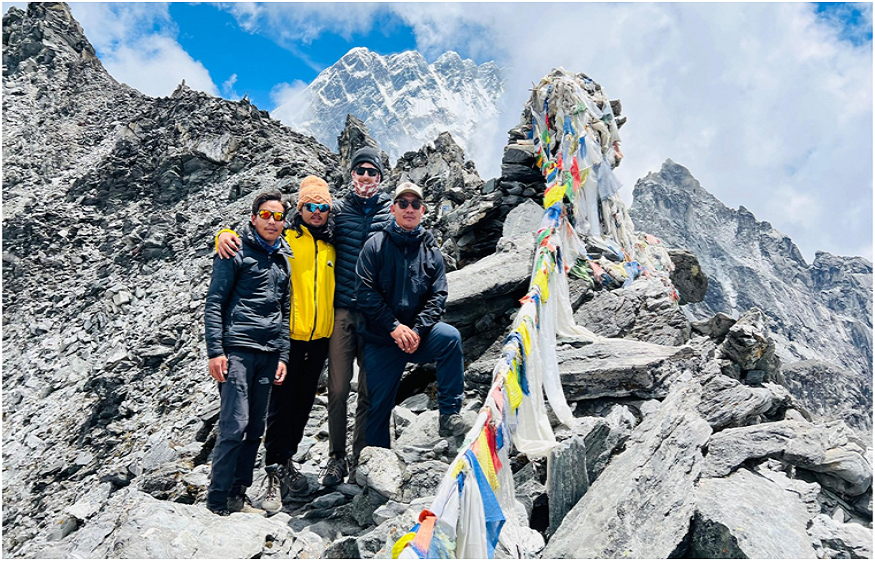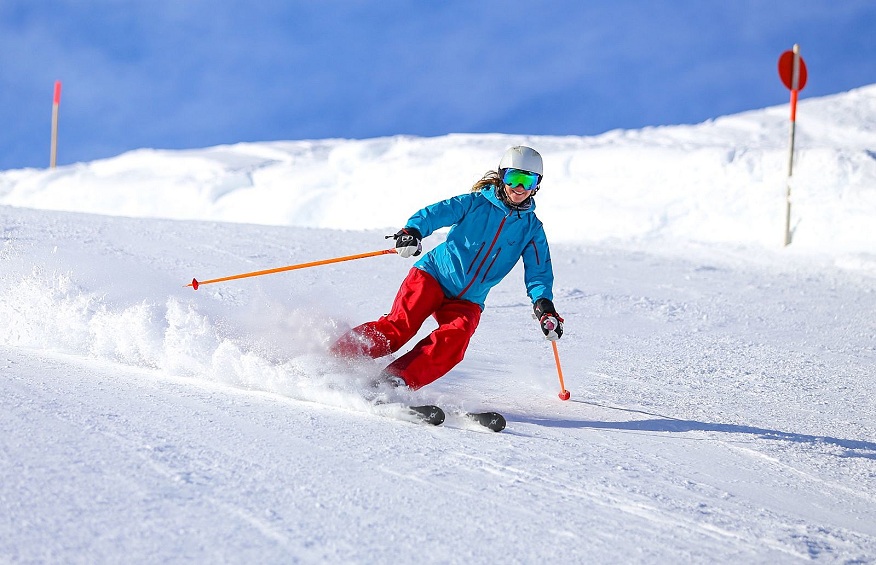Nepal, an arrival of rugged peaks, sacrosanct waterways, antiquated societies, and boundless sky, remains a guide for those drawn to the transformative control of mountains. Underneath the careful look of the world’s most noteworthy summits, four trekking trails stand out—each particular, each exceptional, and however joined together in soul. The Annapurna Base Camp trek, Langtang Valley trek, Manaslu Circuit trek, and the Everest Three Pass trek offer more than mountain vistas—they carry trekkers through time, convention, and the soul of the Himalayas. Together, these four trails shape a collection of ventures that celebrate the wild magnificence and versatile heart of Nepal.
Annapurna Base Camp trek:
The Annapurna Base Camp trek is among the most adored Himalayan ventures, not as it were for its breathtaking goal but for the picturesque story that unfurls with each step. Beginning from the dynamic lakeside city of Pokhara, this path passes through terraced areas, cascading waterfalls, rhododendron timberlands, and Gurung towns like Ghandruk and Chhomrong some time recently coming to the asylum of Annapurna Base Camp.
The trek is directly in trouble and regularly takes 7 to 11 days depending on the course and acclimatization plan. As trekkers climb, they are drawn more profound into the amphitheater of peaks—Hiunchuli, Machapuchare (Fishtail), Annapurna South, and Annapurna I, which at 8,091 meters is the 10th most noteworthy mountain in the world. The minute of entry at base camp is noiseless and soul-stirring. Encompassed by ice and sky, one feels not little but interconnected with the mountains’ calm power.
What makes ABC interesting is its compact differing qualities. In a moderately brief time and open extent, trekkers encounter a cross-section of biological systems, societies, and mountain glory. It’s an idealized presentation to Nepal’s trekking scene, inviting first-timers whereas still lowering prepared adventurers.
Langtang Valley trek:
North of Kathmandu and bordering Tibet, the Langtang Valley trek offers a more insinuating and socially wealthy elective to Nepal’s busier trails. Crushed by the 2015 seismic tremor but consistently modified, the region presently stands as an image of strength. Trekking through Langtang is not a fair trip through nature, but moreover a March with the nearby Tamang individuals who bring life to the valleys with their conventions, dialect, and hospitality.
The path ordinarily starts in Syabrubesi and winds through thick woodlands of pine and bamboo, adjacent to thundering waterways and underneath the careful look of Langtang Lirung (7,227m). Places like Lama Inn, Langtang Town, and Kyanjin Gompa check key parks on the trek. At Kyanjin, one can climb to Kyanjin Ri or Tserko Ri for all encompassing views that match any Himalayan vantage point.
Unlike the tall dramatization of Annapurna or Everest, Langtang is gentler but no less blending. It’s the hush of the yak chimes, the colorful supplication banners shuddering over teahouses, and the profound otherworldly cadence of regular life that sets it separated. This is a trek for those who need association, both with the scene and nearby culture. It’s less commercialized and profoundly immersive—a calm pearl of the Himalayas.
Manaslu Circuit trek: The Untamed Circle
Remote, crude, and progressively respected, the Manaslu Circuit trek follows a way around the eighth-highest mountain in the world—Mount Manaslu (8,163m). Long dominated by the Annapurna and Everest regions, Manaslu has as of late risen as a favorite for trekkers looking for wild without relinquishing social profundity. The circuit, frequently completed in 14 to 18 days, exhibits mind blowing geographic and ethnic assortment as it climbs from swamp woodlands and rice paddies to snow capped glades and cold moraines.
Beginning from Arughat or Soti Khola, the path passes through conventional Gurung and Tibetan-influenced towns like Samagaon and Samdo. The towering dividers of the Nubri Valley feel otherworldly, and the nearness of old religious communities, mani dividers, and chortens uncovers a scene soaks in Buddhist spirituality.
The climax of the trek is the crossing of Larkya La Pass (5,160m), a requesting climb that offers jaw-dropping views of Himlung Himal, Cheo Himal, and Annapurna II. The exertion is compensated with unmatched excellence and a sense of significant isolation.
Permits are more directed here, as the Manaslu region is classified as a limited range, including an atmosphere of eliteness. Whereas teahouses presently line most of the path, it remains less trafficked, permitting for a purer trekking encounter that feels closer to what the Himalayas might have been a century ago.
Everest Three Pass trek:
For those who pine for tall enterprise and are willing to test their physical limits, the Everest Three Pass trek is the extreme challenge. Not at all like the standard Everest Base Camp trek, this circuit wanders off the beaten way, connecting three tall passes over 5,000 meters—Kongma La (5,535m), Cho La (5,420m), and Renjo La (5,360m)—while still going by base camp and famous Sherpa towns along the way.
The trek regularly starts with a flight to Lukla and a trip through Namche Bazaar, the bustling portal to Everest. From there, trekkers move in a counterclockwise heading, to begin with handling Kongma La some time recently coming to Everest Base Camp. They at that point head west to cross the Cho La Pass into the turquoise cold bowl of Gokyo, an arrival of sacrosanct lakes and epic perspectives like Gokyo Ri. The last Renjo La Pass leads to the Thame Valley, a calmer side of the Everest region wealthy in Sherpa heritage.
This trek is not for fledglings. It requests acclimatization, physical wellness, and a resilience for height. In any case, the rewards are amazing. From standing underneath the flanks of Everest and Lhotse to observing the dawn over Ama Dablam and the Ngozumpa Ice sheet, the sheer size of Himalayan magnificence is overwhelming.
The Three Pass trek weaves together all components of the Everest experience—challenge, culture, otherworldly nearness, and radiant view. It is a trek for the enthusiastic trekker, a custom of section that clears out no one unchanged.
One Soul: What Joins together These Trails
Though these four treks change in scene, trouble, and notoriety, they are bound by a shared essence—the soul of the Himalayas. That soul lives in the supplication wheels turned by the hands of senior citizens, in the chuckling shared over dal bhat in a teahouse, in the crunch of snow underneath boots at first light, and in the quiet wonder evoked by a divider of ice and shake rising into the heavens.
Each path educates something diverse. Annapurna reminds us that magnificence lies in assortment and congeniality. Langtang shows the quality of calm perseverance and community. Manaslu offers lowliness in the confrontation of ferocity. Everest Three Passes requests mettle and commitment but returns the blessing of transcendence.
Together, these trails reflect the numerous ways one can involve Nepal—not as it were through nature but through its individuals, otherworldly existence, and ageless cadence of life in the mountains. Whether you look for isolation or enterprise, culture or success, there’s a way here for you.
Planning Your Travel: Down to earth Notes
Best Time to trek: All four treks are best embraced in the spring (March–May) or harvest time (September–November), when skies are clear, temperatures direct, and seen at their best.
Permits:
Annapurna Base Camp: Requires an ACAP (Annapurna Preservation Region Allow) and TIMS card.
Langtang Valley: Needs a Langtang National park Allow and TIMS card.
Manaslu Circuit: Requires a Confined Region Allow, MCAP (Manaslu Preservation Zone Allow), and ACAP.
Everest Three Pass: Needs a Sagarmatha National park Allow and Khumbu Pasang Lhamu Rustic Region Permit.
Accommodation: All courses include teahouses advertising essential lodging and warm suppers. Manaslu remains more provincial compared to Annapurna or Everest regions.
Guide and Doorman: Profoundly prescribed for Manaslu and Everest Three Pass treks due to remoteness and height. In reality, Manaslu requires trekking with an enlisted guide.
Conclusion:
The trails of Nepal do not essentially interface towns and valleys—they interface the inward and external scenes of each traveler. Annapurna, Langtang, Manaslu, and Everest are not fair goals. They are reflections of human continuance, common splendor, and otherworldly discovery.
In a world developing ever louder and quicker, these ways remind us of something fundamental: that strolling gradually through the world’s most prominent mountains, with an open heart and unfaltering breath, is still one of the most genuine ventures we can take.
Contact Details
Company address: Everest Trekking Routes Pvt. Ltd.
16 Khumbu, Nayabazaar, Kathmandu, Nepal
Mobile : +977-9843467921 (Rabin)
Email: [email protected]



